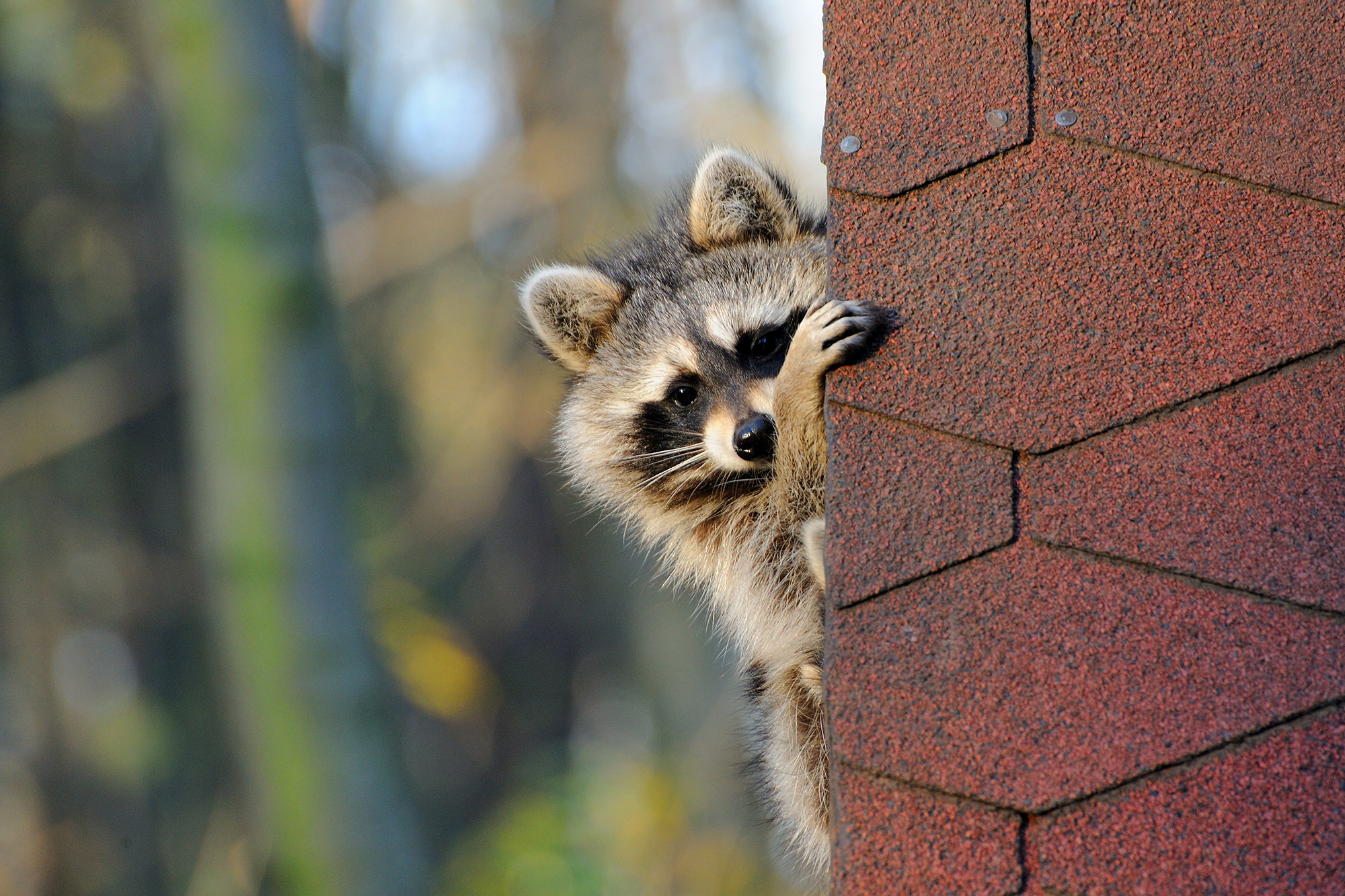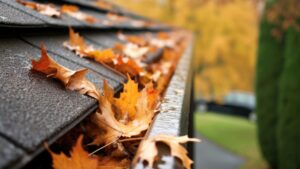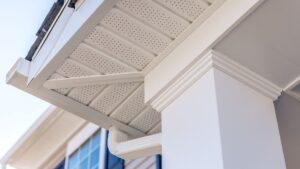If you hear noises in your attic but are unsure why, there are only a few animals you could be dealing with. One of the most common and challenging culprits is raccoons.
Read on to learn how to identify raccoon damage on your roof, and discover how to protect your home’s roof from expensive damage.
Can Raccoons Destroy My Roofing?
Raccoons can chew through roofing shingles to get into your attic. They may also damage your roof vents, soffits, and fascia on their way into your home. They are nocturnal and do their destruction at night, so it’s likely you won’t even hear them as they wreak havoc on your home. But you can find out after the fact. Here’s how:
How to Know Your Roof Was Damaged by Raccoons
There are telltale signs that your roof was harmed by pesky raccoons. Look for:
1. Missing or damaged roof shingles
If you’ve seen raccoons lurking in your yard and your roof shingles appear torn, damaged, or suddenly missing, you may have incurred raccoon damage on your roof. While shingle damage can be incurred by storms, if the weather has been mild and you suddenly see shingles missing, you may have raccoons to deal with.
2. Holes in your roofing
If there are little gaps in your roofing when raccoons arrive, they will manipulate the small holes into larger ones to get into your home. Or, they’ll create new paths through your roof to make their way into your attic. If you notice gaps in your roofing, look in your attic for more evidence that you have raccoons.
3. Raccoon droppings in your attic
If you think raccoons have damaged your roofing system and are living in your attic, climb up and look for tubular droppings. While you’re there, notice if there is an overpowering urine smell permeating the space. If so, you likely have a raccoon infestation. Unfortunately, their feces can spread roundworm (parasites). To protect your health and your family’s health, have the raccoon removed and your attic cleaned promptly.
4. Raccoon nests
If your roof appears damaged, you may find a raccoon nest on it or in your attic.
5. Damaged soffit, fascia, or vents
Raccoons may enter through your soffit, fascia, or roof vents, causing damage along the way. If you find these features are suddenly altered, you may have raccoons in your home.
6. Missing insulation
Raccoons chew their way through your insulation to get into your attic, so they are likely to blame if you are suddenly missing insulation.
7. The timing of damage
Raccoons try to gain entry into your home at night, so if you notice your home exterior looks one way before you go to bed and another way when you awaken, raccoons could be to blame.
Raccoon babies are born in the early spring, peaking around March. They look for warm spaces to bring their offspring into the world, and attics are perfect. The raccoon family sticks around for about three months until their babies become strong enough to get around independently. Being extra vigilant each spring is a smart way to keep your home free from these damaging creatures. If you hear high-pitched squealing, that’s likely the baby raccoons looking for their mom.
How to Keep Raccoons Away from Your Roofing
Get roofing shingles that are resistant to pest damage
The good news? You won’t have to deal with raccoon damage again if you choose to re-roof your home with shingles that deter pests like raccoons from chewing through them.
Repair any damage on your roofing system
Raccoons look for small holes in your roof. If your roofing system is compromised in any way, don’t procrastinate! Get the repairs you need promptly so you don’t invite raccoons or other pests into your home and so you won’t incur moisture damage, rot, or structural damage.
Don’t attract them in the first place
Raccoons are scavengers that thrive on food in garbage cans. Ensure your trash is well secured in cans they can’t get into. Also, realize they may be attracted to your vegetable garden, dog or cat food, or any other food left outdoors.
Try a motion-activated preventive
Adding motion-activated floodlights to your home exterior can help discourage raccoons and other unwanted animals from entering your yard and, therefore, your roof and attic.
Frequently Asked Questions about Raccoon Damage
It’s hard to know where to start when you discover the root of your roof damage is a raccoon infestation. Here are answers to some common questions homeowners have when they find themselves in this situation.
Is raccoon damage covered under homeowners insurance?
In most cases, homeowners insurance will assist in covering damage from raccoons (and other critters) to your roofing system and attic. It should also cover any structural damage that may occur.
Should I try to remove the raccoons on my own?
Raccoon removal can be problematic and should be left to professionals with experience. Their fur can spread fleas and ticks, so have their nest professionally removed to protect your health.
Get Peace of Mind Knowing That Your Home Is Well Protected
As a homeowner, you rest easy when you know your most significant investment is well protected from raccoons, pests, harsh weather, and leaks.
At Best Choice Roofing, we offer a free, no-obligation roof inspection. Experts from our team photo and video any damages and issues on your roof and create a free written estimate if your roof needs repairs or replacement.
Take a moment to learn more about our roofing services.



